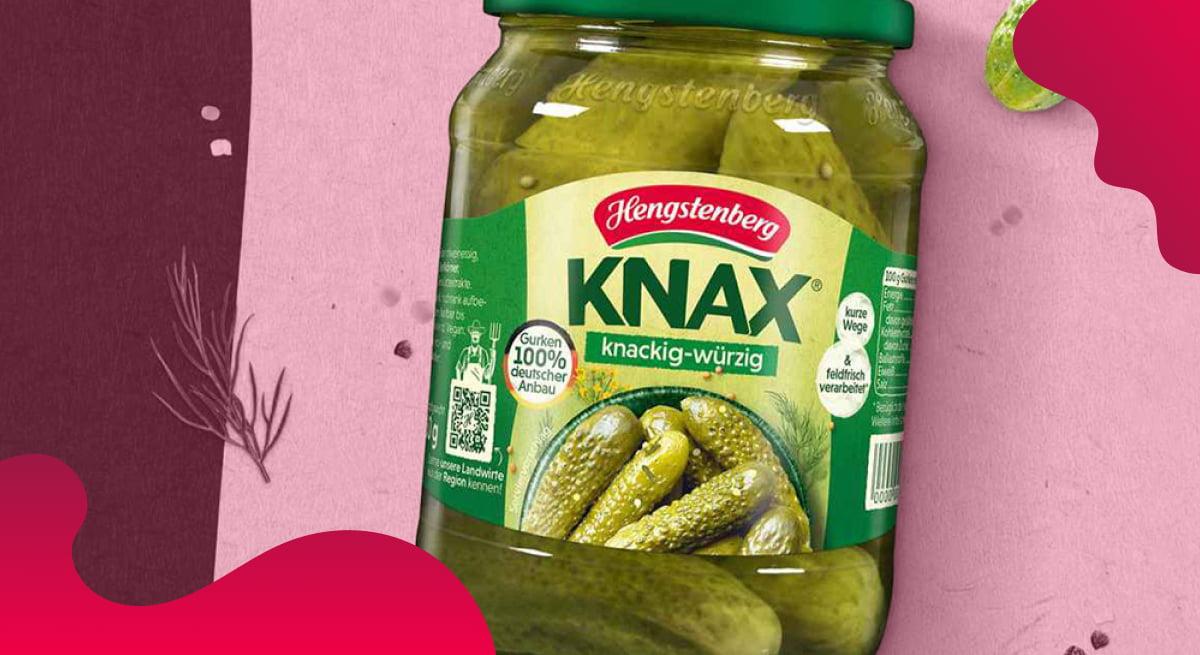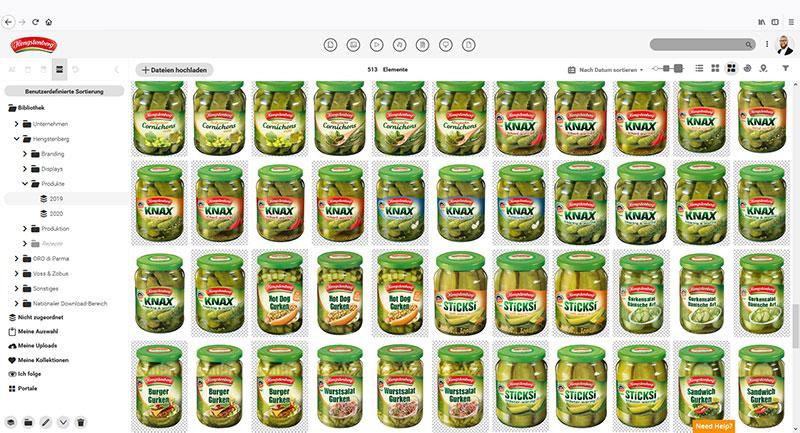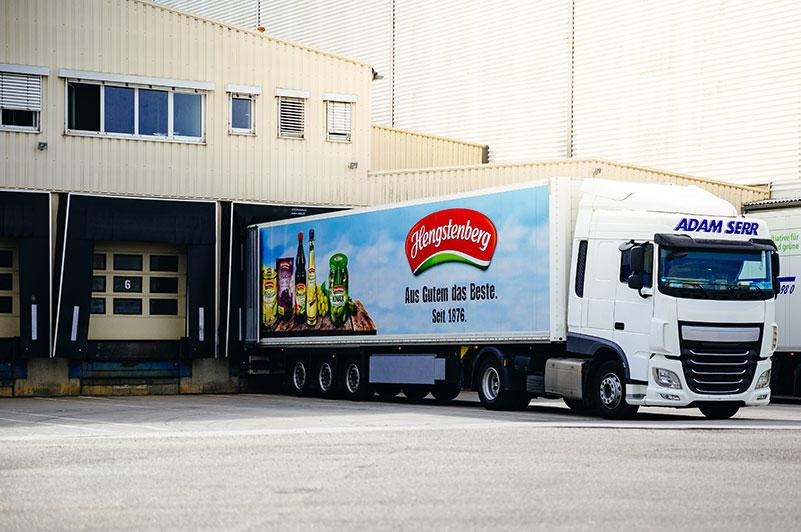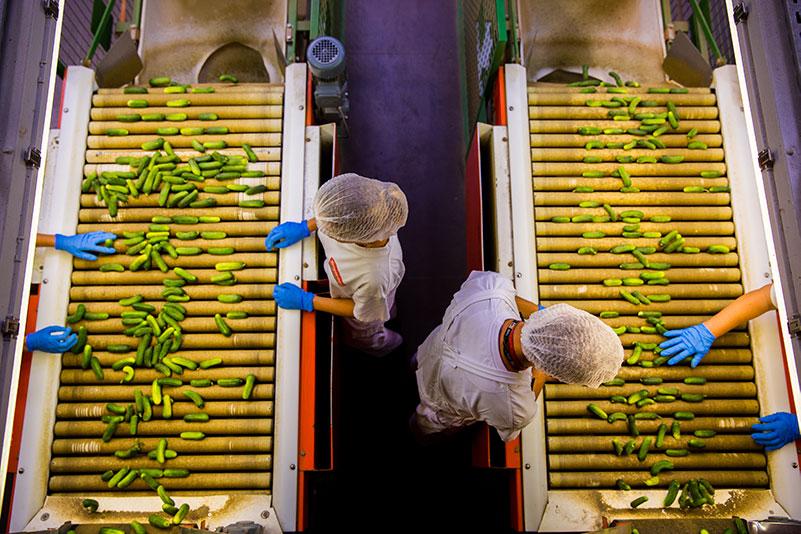Hengstenberg creates central storage location with Canto

What is your job at Hengstenberg?
I began my work for Hengstenberg as a business data processing specialist in 2004 as part of a dual degree program and have now been working for the corporate communication and digital media department for three years. Since we’re a relatively small team, the boundaries between marketing, conventional corporate communication and press work are fluid. My job is primarily social media management, which means I maintain our digital web channels as well as the company’s Intranet. In addition, I also handle the management of our product images along with a colleague.
So, what made Hengstenberg decide to implement a digital asset management system?
I initiated this project myself. When I joined the department, I couldn’t help but notice that the product images for my work, like social media posts, were either hard or impossible to find. All the files were widely scattered in a network drive, subdivided in a folder structure to which new employees didn’t have access. So, that made it difficult to search. Therefore, I took the initiative to find an ideal solution for this in order to store important items, such as product images, in a centralized, consolidated and well-structured manner. So that also means collecting all files, getting rid of duplicates and setting up all the necessary release processes.

When did you first come into contact with the topic of DAM?
I of course was familiar with the software category from my studies. However, the deciding factor was the situation when I joined the department. There was often duplicated work, or the processes were really unwieldy. Of course, that drove me to delve deeper into the topic.
I’m sure that many companies are familiar with the situation you’re describing. So, what problems were influential for you when making the decision to implement a digital asset management system?
For one, searching for files without an appropriate technical solution was very awkward. For collecting images, we had a network drive which was created before my time. Over the years more and more users were added to this drive, responsibilities weren’t followed, file permissions were mixed up. And then there was a first folder, a second folder, a third and then a fourth subfolder – the folder structure had taken on a life of its own and had grown tremendously.
As the “new guy” in the department, I had a hard time finding anything here. My colleagues might have already been familiar with their own folder structure, but everyone else was lost. That means, for instance, that sometimes one colleague had collected images in Folder A, another colleague had the same content again in Folder B. As a result, some images were edited twice, or duplicates of the same images were purchased from agencies.

What was the main factor for you there – the time savings or having a better overview?
Better overview and clarity, without a doubt. The goal was to create a central storage location for all of our digital content.
How did the migration of your new DAM project go with Canto?
We first set our goal and defined what we intended to achieve with this project – a single point of contact for all our assets. Then we considered what files we actually need. We started with product images. That was relatively simple since we only migrated the current images to Canto. Of course, we had to think of what file formats we need, what we need to make available to our customers, etc.
During file migration, we then added important metadata such as keywords and defined a basic folder structure. Here in our team, we work very agilely together to ensure that the contents can easily be found by everyone using sensible keywording. The major advantage for us compared to before is that we are now all working together in a common software environment. Searching for files, filtering duplicates: Canto provides basically everything we need. That helps tremendously. This also does away with process steps, for instance: “I’ll go ask my colleague whether she knows where this or that file is.”
Which of your departments and colleagues are connected to Canto?
We’re now in the first phase of use after the initial launch of Canto. Currently, we mainly use Canto here in the department for corporate communication and digital media. Accordingly, our user group here comprises six colleagues. In addition, there’s one colleague from sales who’s already working with Canto too. She makes the product images available to our customers via Canto. These images are then used when stores such as EDEKA or REWE distribute fliers with offers.
Additional expansion phases are being planned. Just yesterday, I spoke with our international sales team that also wants to get connected to Canto so they can import their own product images in other languages and then set up download portals for their customers. This topic will also become more important for us in Germany.
What type of media files do you manage with Canto (product photos, PR photos, employee photos, graphics, videos, brochures, audio clips, press articles, presentations, logos, fonts, etc.)?
I already mentioned product images. There are also logos, and, in the future, we’ll also manage videos with Canto. In addition, we have a lot of contents in our Canto system which concern the recipes we use on the website and in social media. We use these recipes to illustrate product benefits in a larger sense, what kind of delicious dishes you can make with our products. These include texts, images and in some cases videos.
For our commercial customers, we prepare certificates that are available from us in PDF format. We do all that with Canto as well. Currently, we have around 20 GB of media files in our Canto library, and rapidly growing!
The files are generally provided to us (product images, etc.) by outside partners such as photographers or agencies. I or my colleagues then upload the files to Canto as soon as they’re ready.

So, who’s in charge of system maintenance at Hengstenberg?
That’s primarily my responsibility. I watch to make sure that the assets uploaded to Canto are correctly keyworded. We previously defined the standards for this together in our team and I handle most of the uploading of new assets myself anyway. In our team, we also supplement each other’s assets whenever we think that an asset is missing a helpful keyword.
How has using Canto impacted your day-to-day work up to now?
Even if we don’t have any reliable figures yet, for now, we can already subjectively perceive a major time savings. Sending large files via the share links in Canto by itself saves us a lot of work. Before, we had to solve this problem in a round-about way using third-party providers or other data transfer sites. Layout files especially, which we send to printers or agencies, are just too large to send via e-mail. With Canto, that no longer poses a problem.
Canto’s portals also lighten our workload a lot. Up to now, we’ve also operated an older download portal in parallel which relatively speaking required a lot of manual maintenance. This portal will be shut down in the coming days and replaced by Canto – we’ll also no longer have to maintain the assets twice.
What is your favorite feature?
A few weeks ago, we tested the WordPress plug-in. That lets us publish images right from Canto, which is really handy. I like that a lot. The most important thing for me is that my team now has our decisive assets centrally stored in one place.
How much time do you spend on Canto each day?
During the week, I’d estimate three hours, depending on workload. Our marketing team recently had a series of images replaced, so I was hit with a bunch of files I worked with for a whole day. But there are also calmer days.